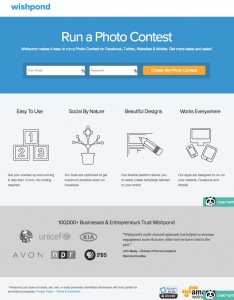Video marketing is poised to be on the forefront of 2015 content marketing strategies. With increased video marketing budgets, an influx of distribution platforms and a continuous rise in the amount of video consumed, individuals and businesses alike are using video more than ever as a way to reach potential customers.
But what trends are we starting to see in 2015, and how can content marketers capitalize?
Just one month into 2015, there are already big developments, but they all boil down to one trend: competition among native video platforms.
YouTube, arguably the most important thing to ever happen to Internet video, is finally seeing a rise in competition that was surprisingly untapped until now. What’s more, these competitors are entering the market with pre-existing reach.
This is important, because the shareability of a video is one of the defining metrics and measures of success for original video content. In other words, video creators and marketers must depend on a pre-established audience to share their online videos with friends who are likely to watch (and in longer duration).
Native Platforms on the Rise
In 2014, we saw one of the most viral video campaigns to date: the ALS Ice Bucket Challenge. Some of you may have made a video, but surely most of you at least watched a friend or celebrity dump a bucket of ice water over their head in support of a good cause.
But take a moment to think about where you watched those videos. More than likely it was within your Facebook feed. That video was uploaded directly to Facebook’s platform, as opposed to sharing a link to YouTube or another hosting site.
The shift to native video on individual social platforms is a hugely important and impactful switch. Facebook hosted 10 billion views of the ALS challenge while YouTube hosted just 1/10th of that. So why did Facebook dominate the view counts in this instance?
Facebook and Twitter’s users are engaged to the degree of 1.39 billion and 284 million monthly users respectively. Seventy percent of these Facebook users and 36 percent of Twitter users visit the site on a daily basis. Most importantly, these users are engaged with each other, rather than the platform itself. Their desire to share content with friends is more easily fulfilled through Facebook and Twitter than through YouTube and its underlying Google+ platform.
The shareability factor was a big driver of the ALS video craze. It even plays into Twitter’s recent decision to add native video, which is already showing potential to dominate the real-time event video space.
Shareability also drove Facebook’s acquisition of ad tech company LiveRail, a solution to online video advertising on Facebook. It will introduce essential new features for marketers, such as a view counter. Though this may seem simple, make no mistake: this is directly aimed to compete with YouTube on a larger scale.
Choosing the Right Platform
What exactly does this mean for content marketers? Should you pack up your YouTube channel and head for the greener pastures of Facebook or Twitter?
Not so fast.
Choosing which platform you will use to post and share videos differs greatly and has many qualifiers. For example, you must know where your intended audience currently engages, the desired lifespan of your video, how quickly you need your audience to watch the video and so on.
Here are a few general guidelines to use when planning your 2015 video content marketing strategy:
YouTube
Pros: YouTube is based on discoverability, where videos can be easily searched and consumed. Expect a high lifetime value from YouTube videos.
Cons: YouTube isn’t the most user-friendly platform, meaning your shareability may be extremely low.
Best Bang for Your Buck: Evergreen videos do well, as do episodic series which can gain a distinctive audience.
Pros: Facebook is focused more on relevancy. You’re more likely to have an engaged audience with friends who are also likely your target customers.
Cons: There is no video search functionality on Facebook, so the life span may be low.
Best Bang for Your Buck: Short form videos that engage the viewer early.
Pros: Twitter is inherently real time, so content stands to have a huge impact.
Cons: As with Facebook, there’s no search function. You have to expect an exceptionally low life span, because even virality on Twitter is short-lived.
Best Bang for your Buck: Since Twitter videos are consumed immediately, produce videos intended for a short viewer attention span. They must also be highly informative or entertaining to warrant re-tweeting.
2015 is certain to change the way marketers create and share online video, mainly because the way viewers consume and digest video is also shifting. For example, the above are just three of the most well-known and relevant social media platforms. There are numerous smaller video sharing and discoverability networks on the rise, such as Vimeo, Vessel, Amazon Video Shorts, Daily Motion and Yahoo Screen.
But whether you are a Fortune 500 business creating product tutorial videos, a small business trying to get recognition locally or an individual who wants to share your grumpy cat parody, 2015 is the year of video experimentation. In other words, utilize and test all outlets for your custom content to see which is truly most effective for you and most importantly, your audience.
(272)
Report Post






